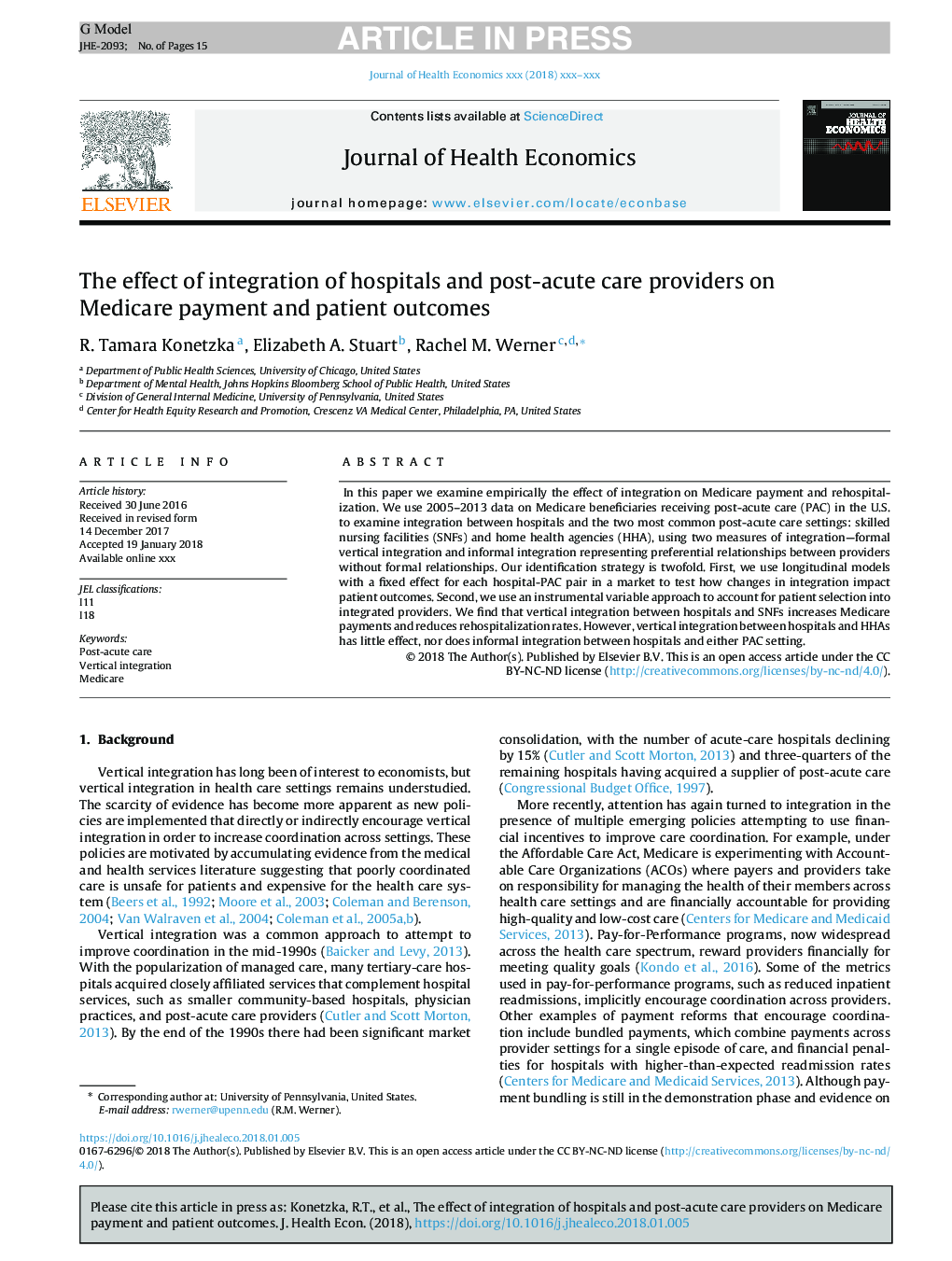| Article ID | Journal | Published Year | Pages | File Type |
|---|---|---|---|---|
| 11004858 | Journal of Health Economics | 2018 | 15 Pages |
Abstract
In this paper we examine empirically the effect of integration on Medicare payment and rehospitalization. We use 2005-2013 data on Medicare beneficiaries receiving post-acute care (PAC) in the U.S. to examine integration between hospitals and the two most common post-acute care settings: skilled nursing facilities (SNFs) and home health agencies (HHA), using two measures of integration-formal vertical integration and informal integration representing preferential relationships between providers without formal relationships. Our identification strategy is twofold. First, we use longitudinal models with a fixed effect for each hospital-PAC pair in a market to test how changes in integration impact patient outcomes. Second, we use an instrumental variable approach to account for patient selection into integrated providers. We find that vertical integration between hospitals and SNFs increases Medicare payments and reduces rehospitalization rates. However, vertical integration between hospitals and HHAs has little effect, nor does informal integration between hospitals and either PAC setting.
Related Topics
Health Sciences
Medicine and Dentistry
Public Health and Health Policy
Authors
R. Tamara Konetzka, Elizabeth A. Stuart, Rachel M. Werner,
